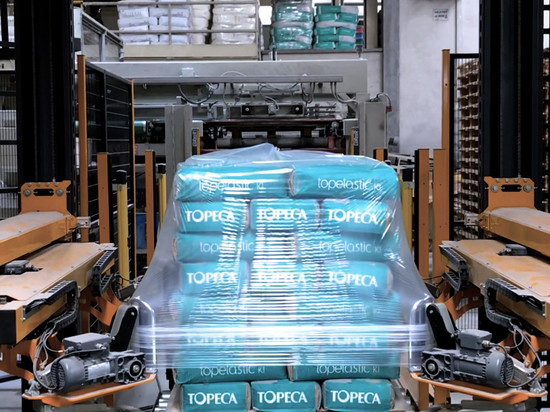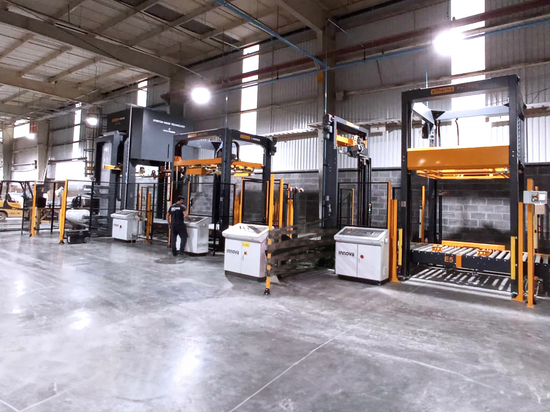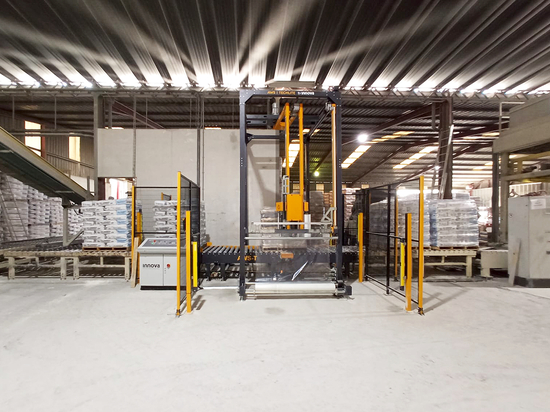
#Product Trends
Comparative: Stretch Hood or Shrink-Hood?
We analyse advantatges of each pallet wrapping system
This is a question the technical manager of a factory can ask himself: Do I need Shrink-Hood or Stretch Hood for my end of line? These are two pallet packaging systems with process and results that may look very similar, but with differences that are key to manufacturing and product performance. Today we are going to describe the differences and advantages of each system according to the product or industry in which they are used.
1. THE WRAPPING PROCESS
Both Stretch Hood and Thermo-shrink systems share essential aspects such as the application of tubular film, but the wrapping process is completely different:
√ The Shrink-Hood wraps first the pallet with the tubular film and then heats it with a combustor that shrinks the film to 280º. Through the application of heat, the film adheres completely to the load, regardless of the shape of the pallet.
√ The Stretch Hood system wrapps a tubular stretch film that adapts to the dimensions of the load. In fact, the size of the film applied is smaller than the size of the load so it is perfectly adjusted.
2. DIFFERENCES OF STRETCH HOOD VS SHRINK HOOD:
For the comparison between the two systems we will take into account the differences from Stretch Hood's point of view as it is the most advanced solution and the one with more presence in different industries during the last years.
√ Savings in consumables and energy
The main difference between the two systems is that Stretch Hood does not need heat to shrink the film, so all costs related to the heat shrink system are eliminated: use of gas energy, maintenance, etc.
In addition, Stretch Hood uses the exact film required for each wrapping and uses a thinner and lighter film than shrink-hood, as it does not need to withstand the heat. This also results in a reduction in the amount of film used daily.
√ Improved final quality of wrapping
The Stretch Hood system provides a perfect presentation, without the typical folds and wrinkles caused by shrink-wrapping. In addition, the optical properties of Stretch Hood film provide full transparency and gloss to show the contents of the load.
√ Protecting the interior of the load
We always talk about protection against external agents, but also the interior is better protected with the wrapping system. As there is no heat, Stretch Hood does not alter the properties of the product. Therefore, there is no danger of the film sticking to the pallet contents and specifically to the other plastics used in the primary and secondary packaging.
We emphasize that Stretch Hood can adapt to all kinds of loads, even those that could deteriorate from the heat of the shrink sleeve.
√ Higher speed in pallet packaging
By avoiding the shrinking phase, the Stretch Hood system wraps the pallet faster -around 150 pallets/hour-, doubling the production of a shrink-wrapping system -which usually wraps 60 pallets/hour. This is a decisive argument for many companies to further automate and optimize the production of their end of line.
√ Greater process safety
Finally, the Stretch Hood system does not use any type of combustion for wrapping, thus eliminating the risk of fire or explosion that can involve a gas oven installation.
3. RECOMMENDED PACKAGING SYSTEMS BY SECTOR
As we have seen, the advantages of Stretch Hood over Shrink-hood are greater, so we usually recommend the former technology for pallet wrapping, due to savings, quality and efficiency reasons. However, the heat shrink system has applications for specific sectors and products. For instance, the construction sector with products such as tiles, bricks, etc. For these industries, shrink-wrapping it is used to protect and hold a product that does not usually have primary or secondary packaging.
The thermo-shrink system could also be applied for industries that have pallets with very different and uniform sizes. This would be the case of logistics or a warehouse with many picking loads and especially unequal volumes.
On the other hand, the Stretch Hood system developed by Innova adapts to all types of products, being able to configure various pallet dimensions and load types. Stretch Hood is especially valued in sectors with boxed products (such as ceramics, paper, food, etc.) and bagged products (such as cement, chemical, agro-food, etc.) as it allows total protection of the product, with a higher final packaging finish.
Do you have technical questions or would you like to find out which system best suits your product? Consult us without obligation and we will advise you.
#WeArePackagingTechnology
# WeAreInnova







